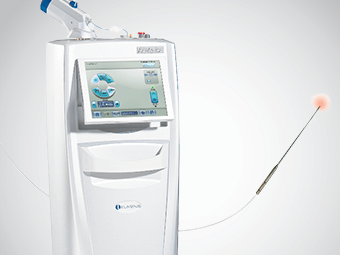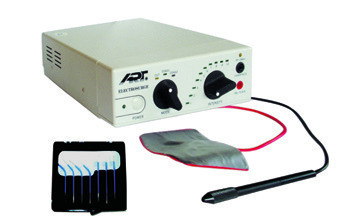What are the chances of scarring after Xanthelasma Treatment?
The chances of scarring after undergoing Xanthelasma treatment depend on the
- Type of treatment. There are treatments that are more likely to lead to scarring than others.
- Whether any damage was caused to the dermis during the treatment.
- Infections following the treatment.
Type of treatments proven to work
The available treatments that are scientifically proven to work are only:
Surgical excisions
Xanthelasma excision using a Scalpel
This is the oldest method of removing Xanthelasma. It consists in using the same procedure used for skin cancer excision. This is a very effective procedure in removing Xanthelasma within one session. However, it is very invasive:
- Bleeding will inevitably occur during the surgical procedure
- The use of local anaesthetic is mandatory
- There are risks of infections
- The procedure will almost inevitably scar the patient
This type of procedure is to be avoided due to the high chances of scarring to the patient. Given all the modern techniques available, there is no reason for this type of treatment to be used any longer.

Scars following excision using a scalpel

Scalpel Excision to be avoided

Visible scar left by Scalpel Xanthelasma excision
Laser removal
Xanthelasma laser treatment is very effective in removing Xanthelasma, but it is very expensive. This Xanthelasma laser removal method is similar to electrolysis or electrical arcing to removing the xanthelasma but slightly more difficult to perform and also more dangerous. Lasers are generally depends on instruments for ablating soft tissues with a high degree of precision.
Xanthelasma laser removal is currently the most popular treatment and the most expensive at the same time. This treatment is advised to many patients suffering from Xanthelasma, not because Xanthelasma laser removal is the most cost effective or risk-free way to treat this condition but because surgical lasers are widely used in the western world (Europe and north America).
Laser Xanthelasma removal effectiveness is dependent on the surgeon who uses the Laser and less dependent on the Laser itself. The more experienced the surgeon the less chance of scarring and the higher chance of complete removal success rate.
An experienced surgeon is usually capable of removing all the Xanthelasma within one session and without damaging the dermis, consequently minimising the risks of scarring.
Although this is the most popular treatment and effective, unfortunately, this is expensive treatment because lasers are normally expensive.
The main causes of scars after Xanthelasma removal using a surgical laser are:
- Misuse of laser causes undesired damage to the dermis, generally by trying and removing thick and deep Xanthelasma within one session only. This type of damage is generally caused by human error. No machinery’s fault has been reported as being the cause of scars after Xanthelasma excision using lasers.
- Lasers for Xanthelasma removal can cause another inherent risk…Surgical lasers could be inadvertently pointed directly into the patient’s eye damaging the eyes and in extreme cases even causing permanent loss of vision. Therefore, in order to avoid to inadvertently damage the patient’s eyes, it is highly recommended that the patient wears eye protectors during laser excision.

Xanthelasma excision using conventional electro-cautery units
Although this type of treatment is cheaper than laser excision, generally the risks of scarring the patients are lower. The tip of the electro-cautery unit is used in fulguration mode. The eyelids and the skin around the eye are particularly sensitive, therefore the equipment has to be set to operate at low power in order not to affect the dermis on such a delicate part of the skin.
Electro-cauterization will allow the operator to ablate the Xanthelasma with a high degree of precision and more efficient than using conventional lasers. This higher degree of precision makes the excision easy to perform and minimizes the chances of causing damage to the dermis. Hence, Xanthelasma removal by using an electrocautery unit in fulguration mode is generally easier and safer than using conventional surgical lasers.
Therefore despite the fact that electrocauterization units are available at a much lower price than surgical lasers, they are a far better option for xanthelasma removal, both in terms of safety and results.
By using electrocauterization units:
- The procedure is cheaper due to the low cost of the conventional electrocauterisation units.
- The likelihood of scarring the patient is less than using lasers because there is less room for mistakes
- The use of topical anesthetic may be required.
- The risks of hurting the eyes are negligible compared to conventional lasers.

Cryotherapy (also refferred to as Cryosurgery)
Cryotherapy is a dermatological method of removing warts, birthmarks, seborrhoeic Keratoses, and many other lesions. This is done by quickly deep-freezing the area to be treated and can be done by using various substances. The most common substance used is liquid Nitrogen. Treatments using Cryotherapy are very effective in removing skin lesions. Cryotherapy has also been used in the treatment of Xanthelasma.
The main advantage of Cryotherapy is that the Xanthelasma can be removed within one session. Moreover, The risks of infection after the procedure are very low.
-
-
- The application of liquid nitrogen does sting. Although it’s cold, many describe the procedure as a feeling of “burning”
- Cryo_ablation can cause treatment sites to appear permanently lighter in color (hypopigmantation). Extra caution must be used when treating the face or any other cosmetically sensitive area.
- It’s only appropriate to remove skin lesions on parts of the body that are not as delicate like the eyelid area. In other words, it’s generally effective for the treatment of fully developed skin cancers or “deep” lesions such as large moles which grow on other parts of the body away from the eyelid area.
- Depending on how it is applied and the location of the treatment site, blisters will sometimes form in the days following treatment (more common on the eyelids).
- It is a treatment which should be avoided at all costs on the upper eyelid area.
-
Peelings for Xanthelasma removal
Peelings are the preferred option for Xanthelasma removal for three reasons:
-
-
- Peelings can be performed by the patients themselves as the peelings are safe and easy to apply. The peelings are formulated to suit the patient skin type.
- The right peelings are safe for dermis because they do not cause any damages to the dermis. The area treated of skin is very unlikely to get infected.
- The price for a Xanthelasma removal peel is very low compared to other treatments.
- Using the right specialized peel provides the best chances of removing the xanthelasma without leaving any scars.
- Repeated use of specialized peels will inevitably remove all Xanthelasma.
-
Disadvantages
The only disadvantage of using specialised peels for xanthelasma removal is that more than one treatment may be required to remove all the xanthelasma.
